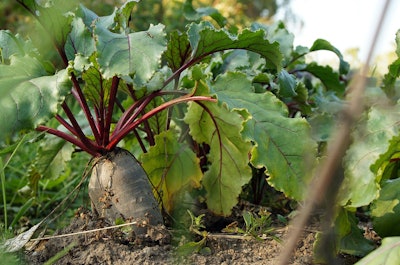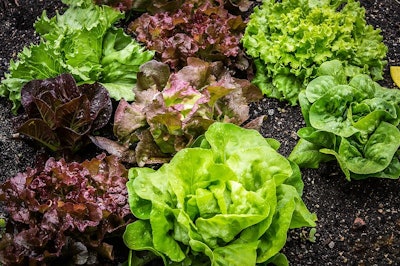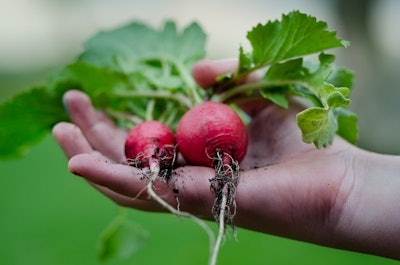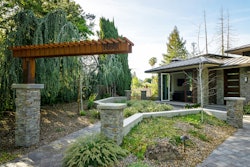 Photo: Pixabay
Photo: PixabayEdible gardening has gained popularity across the nation over the past few years, and if your customers have expressed an interest in it, a good place to begin is by telling them all about their cool-season vegetable options.
Cool-season vegetables will grow best when the temperatures are averaging around 15 degrees cooler than what’s needed for warm-season types. For the best results, experts say these vegetables will need to grow to full maturity in the midst of the cooler weather.
If they aren’t allowed to reach maturity during the cooler months, it’s very possible that these veggies will turn bitter in taste, or they could just not produce any edible parts at all. Although these vegetables have the ability to survive colder temperatures, it is also a good rule of thumb to ensure they receive some sort of warmth, whether that’s simply putting down a layer of mulch or building some kind of cover or frame.
Once soil temperatures reach around 50 degrees, it’s a good time to start seeding a wide range of cool-season vegetables, including leaf lettuce, onions, parsnips, mustard greens, beets, peas, carrots, turnips, cabbage, spinach, kohlrabi, cauliflower, radish, celery, Swiss chard, kale, and collards.
It’s important, though, to make sure your customer’s soil is properly prepared before beginning any planting. According to the Michigan State University (MSU) Extension, if the soil in the area is water-logged, it can cause the seeds to rot before they ever start sprouting.
“Also, any cultivation or disturbance of the soil when it is too wet will destroy the soil structure and be detrimental to the microbial life that lends to a healthy soil,” the MSU Extension says online. “Soils should be lightly tilled or broken apart to deposit seed not cultivated repeatedly.”
The MSU Extension says this could also be a good time to consider your options for companion planting to create multiple layers for your customer’s garden. For example, the MSU Extension says a good pairing could be seeding radishes and beets with lettuce, as the shallow roots of the lettuce will grow closer to the top of the soil and the deeper beet and radish roots will push down farther.
“Take advantage of the vining habit of peas to plant them amidst a ground cover of greens,” the MSU Extension says online. “Provide upright support for your peas via a trellis while lettuce or spinach help to shade and cool the roots of the peas and ward off weed seeds.”
Take a look at a few great cool-season vegetable options your customers are sure to enjoy this time of the year.
Beets
 Photo: Pixabay
Photo: PixabayBeets prefer full sun and are a fast-growing option when choosing a cool-season vegetable. They can also be planted again in the middle of summer to give customers another round of veggies in the fall. Be sure to remind your customers that both the leaves and roots on the beet are edible, which means this vegetable is extremely beneficial for customers with smaller garden areas. Depending on the type, beet colors can range from golden yellow to deep crimson to red and white striped. They can grow to be 1 to 3 feet tall and 18 to 24 inches wide, and they grow best when planted in well-drained, loose soil that gets at least eight hours of direct sun a day.
______________________________________________________
Onion
 Photo: Pixabay
Photo: PixabayOnions are easy to grow, and they also bring big, bold flavor to the table. These vegetables prefer full sun and soil that is well-drained and moist. They can grow to be 6 to 12 inches or 1 to 3 feet tall and 1 to 5 inches wide. Depending on whether they are the long-day or short-day variety, these veggies will begin to form bulbs based on how much sunlight they receive each day. The short-day varieties will only need about 10-12 hours for bulb production, while long-day types will need 14 or more.
______________________________________________________
Cabbage
 Photo: Pixabay
Photo: PixabayCabbage is a popular choice when it comes to cool-season vegetables, and it is also rich in both nutrients and antioxidants. Along with the health benefits that accompany cabbage, it also looks great in a landscape and comes in a range of textures and colors. Cabbages prefer full sun, and they can grow to be 1 to 3 feet tall and 1 to 2 feet wide.
______________________________________________________
Lettuce
 Photo: Pixabay
Photo: PixabayWhether your customers have a large area they want to dedicate to their cool-season vegetable patch or just a small section of their yard, lettuce is always an excellent choice. Not only does lettuce offer customers a wide variety of choices, but it will also typically only take about six to eight weeks for lettuce to start producing. This vegetable prefers part to full sun, and it can grow to be anywhere from under 6 inches to 6 to 12 inches tall and 2 to 12 inches wide.
______________________________________________________
Radishes
 Photo: Pixabay
Photo: PixabayAfter planting, radishes will typically begin producing edible roots in as little as 30 days. Radishes prefer full sun, and they can grow to be 1 to 3 feet tall and 1 to 2 feet wide. They pair well with spinach, lettuce, peas, and green onions. These vegetables require fertile, well-drained soil and should be planted about ½ inch deep and 1 inch apart in rows that are 6 inches apart.











